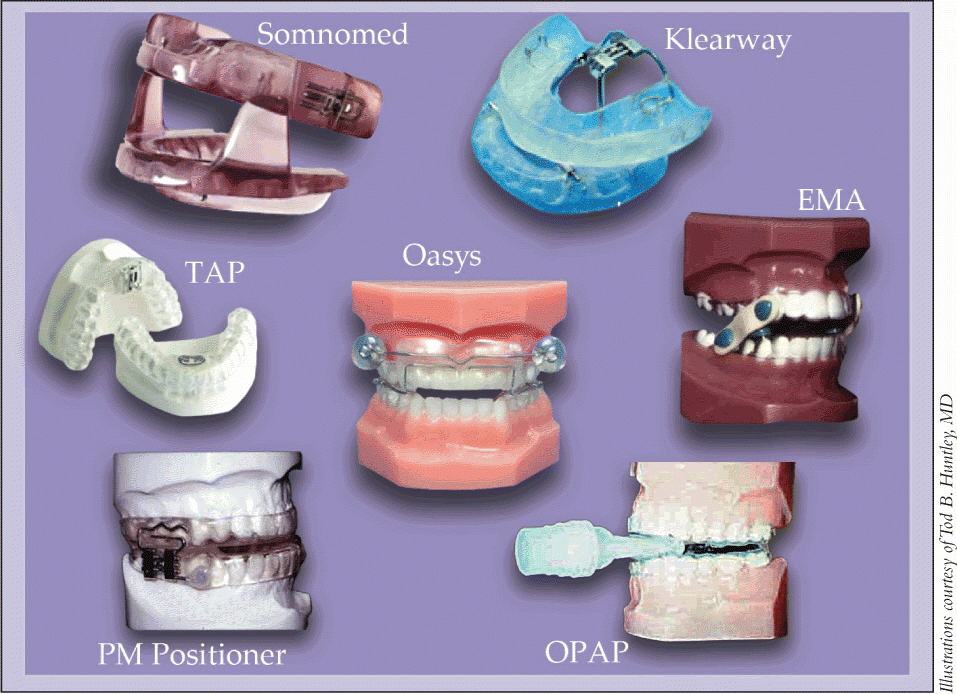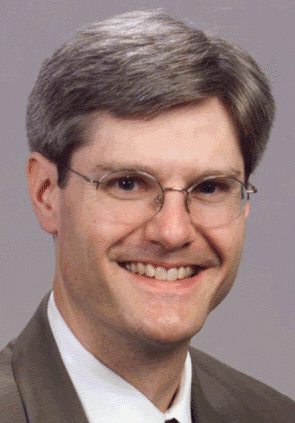SAN DIEGO-For patients who undergo surgery for obstructive sleep apnea, failure of surgery to achieve success presents a number of challenges to otolaryngologists. First and foremost is the challenge of correctly assessing the outcome of surgery followed by the need to choose additional therapy tailored to the particular needs of each patient.
In a miniseminar titled What to Do After Unsuccessful Sleep Apnea Surgery?, experts took on this challenge and highlighted key issues for otolaryngologists who grapple with the often difficult task of caring for patients with persistent sleep apnea after surgery.
Evaluating Surgical Outcome
For Samuel A. Mickelson, MD, an otolaryngologist at the Atlanta Snoring and Sleep Disorders Institute, the easiest measure of success for patients treated for obstructive sleep apnea, similar to all diseases, is whether the patient feels better and the symptoms have been relieved.
Improving quality of life, however, is only half the story. Survival outcomes make up the other half. The real question is how we define success for longevity, he said, adding that there still is no test that will predict how long a person will live or, more important, who will die of sleep apnea.

As such, even if the patient feels better after apnea surgery, evaluation of the success or failure of sleep apnea surgery requires a follow-up postoperative sleep study to measure respiratory disturbance index (RDI) and apnea-hypopnea index (AHI)-the best measures currently available to measure indices of mortality risk.
To increase the accuracy of these measurements to predict survival outcomes requires comparing postoperative measurements with preoperative measurements, emphasized Dr. Mickelson, who highlighted the problems with obtaining an accurate measurement given that the measurements vary from night to night depending on a number of factors, including sleep position and degree of REM and NREM sleep.
Comparing pre- and postoperative sleep study measurements can help identify whether the AHI or RDI actually goes up or down, given these variations, he said.
What these measures say about surgical outcomes, however, remains uncertain. There is no set criterion that adequately defines success or failure, said Edward M. Weaver, MD, MPH, Chief of Sleep Surgery and Associate Professor of Otolaryngology-Head and Neck Surgery at University of Washington School of Medicine in Seattle, adding that success or failure depends on a number of factors, including the goals of the patient, baseline apnea severity, comorbidity, and whether or not alternative treatments are still available.
The apnea-hypopnea index does not correlate well with many important clinical features of sleep apnea, he said. Thus, success for any particular patient should be judged based on multiple clinical parameters, including patient symptoms and sense of improvement, exam findings, and numerous parameters from sleep testing.
Postoperative Treatment Options
Along with further surgical options, a common therapy recommended for patients who need ongoing treatment is continuous positive airway pressure (CPAP). According to Ofer Jacobowitz, MD, PhD, of Hudson Valley Ear, Nose and Throat PC in Middletown, NY, there are insufficient data to predict which patients will accept and adhere to CPAP after surgery.
Although in his clinical practice, the majority of patients will retry CPAP after surgery, adherence to treatment, which is critical to effectiveness, remains mixed due to persistent problems with comfort and other side effects. This mixed result with CPAP adherence is borne out in the literature. Some data indicate improved adherence to CPAP after surgery, perhaps attributed to lower CPAP pressure requirements, said Dr. Jacobowitz, but the data remain insufficient.
Another unanswered question is whether the anatomic alterations after palatal surgery can compromise the effectiveness of CPAP after surgery. Although a few studies show a higher chance of leaks in some postsurgery patients using CPAP, Dr. Jacobowitz pointed out that an often referenced study by Mortimore and colleagues used maximal air pressure to test the efficacy of CPAP on awake patients while erect (Am J Respir Crit Care Med 1996; 154:1759-62).
That may not mean much because we’re not interested in maximal pressure, but in the pressure that the individual needs, he said, adding this is not the maximal pressure. When optimal pressure is used instead of maximal pressure, the incidence of leaks is far less. For example, ones study found leaks in only two of 52 patients at optimal pressure after multilevel surgery (Laryngoscope 2009;119:193-6). In another study, leaks at optimal pressure were present in five of 31 patients but only in those who underwent aggressive uvulopalatopharyngoplasty (UPPP) with more resection of tissue (Sleep Breath 2006;10:37-42). This suggests that leaks may be avoided by more conservative technique with less resection.
 The apnea-hypopnea index does not correlate well with many important clinical features of sleep apnea. Thus, success for any particular patient should be judged based on multiple clinical parameters, including patient symptoms and sense of improvement, exam findings, and numerous parameters from sleep testing.
The apnea-hypopnea index does not correlate well with many important clinical features of sleep apnea. Thus, success for any particular patient should be judged based on multiple clinical parameters, including patient symptoms and sense of improvement, exam findings, and numerous parameters from sleep testing.-Edward M. Weaver, MD, MPH
One potential way to improve the efficacy of CPAP by increasing adherence is by decreasing nasal resistance through nasal surgery. One of the main issues with noncompliance is intolerance to high air pressure. Dr. Jacobowitz highlighted data from several studies that showed the efficacy of nasal surgery in reducing nasal resistance and subsequently lowering the amount of air pressure and increasing tolerance to CPAP.
Nasal surgery does a wonderful job at improving CPAP compliance, said Dr. Mickelson, adding that many people cannot adhere to CPAP because they cannot breathe through their noses. After nasal surgery, 70 percent of patients will be able to use CPAP without any difficulties, he said.
Oral appliances are another treatment option for postsurgical patients, particularly beneficial for patients with mild to moderate sleep apnea. Although not as effective as CPAP in managing sleep apnea, oral appliances are better tolerated and therefore provide overall comparable effectiveness.
I will use oral appliances in patients who have tried CPAP and are intolerant to it, said Dr. Jacobowitz, in patients who have failed surgery and want to be treated medically but not with CPAP, and in patients with mild to moderate sleep apnea who prefer them to CPAP.
Tod C. Huntley, MD, a head and neck surgeon at the Center for Ear Nose Throat and Allergy in Indianapolis, who is on the teaching faculty of the oral surgery department and the dental school of Indiana University, agrees that oral appliances have a larger role to play prior to and after surgery than they currently do in otolaryngologic practice.
Among the many and various oral appliances available (see illustration on page 1), Dr. Huntley suggests several criteria that otolaryngologists can use in choosing an appliance for a given patient. His preference is for appliances that are FDA-approved for sleep apnea (and not the nearly 25 approved for snoring only), that are adjustable or able to be titrated to fit the particular anatomy of a patient, and that meet the particular nuances of a given patient. He outlined the many factors that must be taken into account in deciding who might benefit most from appliance therapy and who might not be good candidates.
For example, some appliances are more easily adjustable, and therefore easier to use by patients with arthritis, he said. He also prefers appliances with a hard outer shell because they last longer and allow for less dental movement, which can be a negative side effect.
Although widely available, many otolaryngologists do not include oral appliances in their treatment options largely because they are not aware of the appliances, are not trained in their use, and remain skeptical about their role in using them, according to Dr. Huntley.
For Dr. Huntley, this is a mistake. There are a variety of treatment options to be considered for sleep apnea patients, he said. We need to broaden our tools in our tool box and understand that oral appliances are an excellent treatment option.
One-Stop Shop: The Otolaryngology Office
We [otolaryngologists] can be the medical home for the sleep apnea patient, said Dr. Jacobowitz. We can treat the patient comprehensively and provide the multiple treatment options tailored to patient preference and the patient’s type of disease.
Although many treatments, including surgery and CPAP, currently already fall under the auspices of otolaryngology, fitting and managing patients with oral appliances typically is done by a dental specialist, as recommended by the revised 2006 American Academy of Sleep Medicine (AASM) guidelines, despite the fact that most dentists are not trained in sleep issues and are not familiar with more than one appliance.
With sufficient training and education about oral appliances, however, otolaryngologists should be able to provide this treatment as well, according to Dr. Jacobowitz, and echoed by Drs. Mickelson and Huntley, who added that providers need to be aware of their potential dental side effects and how to deal with them.
Sleep apnea is a medical problem, with serious health consequences such as cardiovascular disease, emphasized Dr. Huntley. Otolaryngologists don’t have to relegate the need to take a larger role in the entire care of the sleep apnea patient. We know the medicine, we know the disease process, and we know the upper airway anatomy better than anyone else.
As this is management of a medical problem, Dr. Huntley also emphasized that treatment with oral appliances, similar to surgery and CPAP, is covered by insurance. Under the auspices of many dentists, he said, this is often not the case, because they might not bill insurance for these appliances. Instead, patients are required to pay out of pocket, sometimes up to $3000 to $5000. This is not right, said Dr. Huntley, noting that if otolaryngologists would provide these oral appliances, they would be billed to insurance, eliminating out-of-pocket expenses for the patient.
Contact the Editor
ENToday welcomes your feedback about our publication! Contact us at ENToday@lwwny.com
©2009 The Triological Society
Leave a Reply